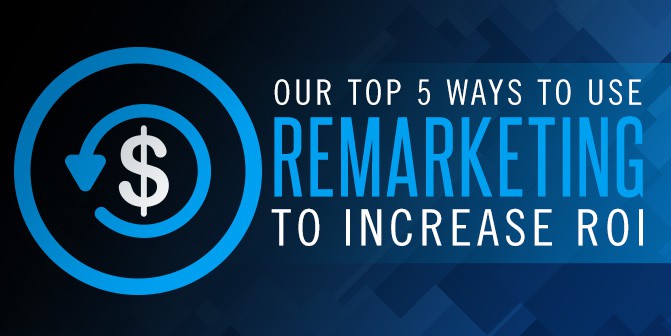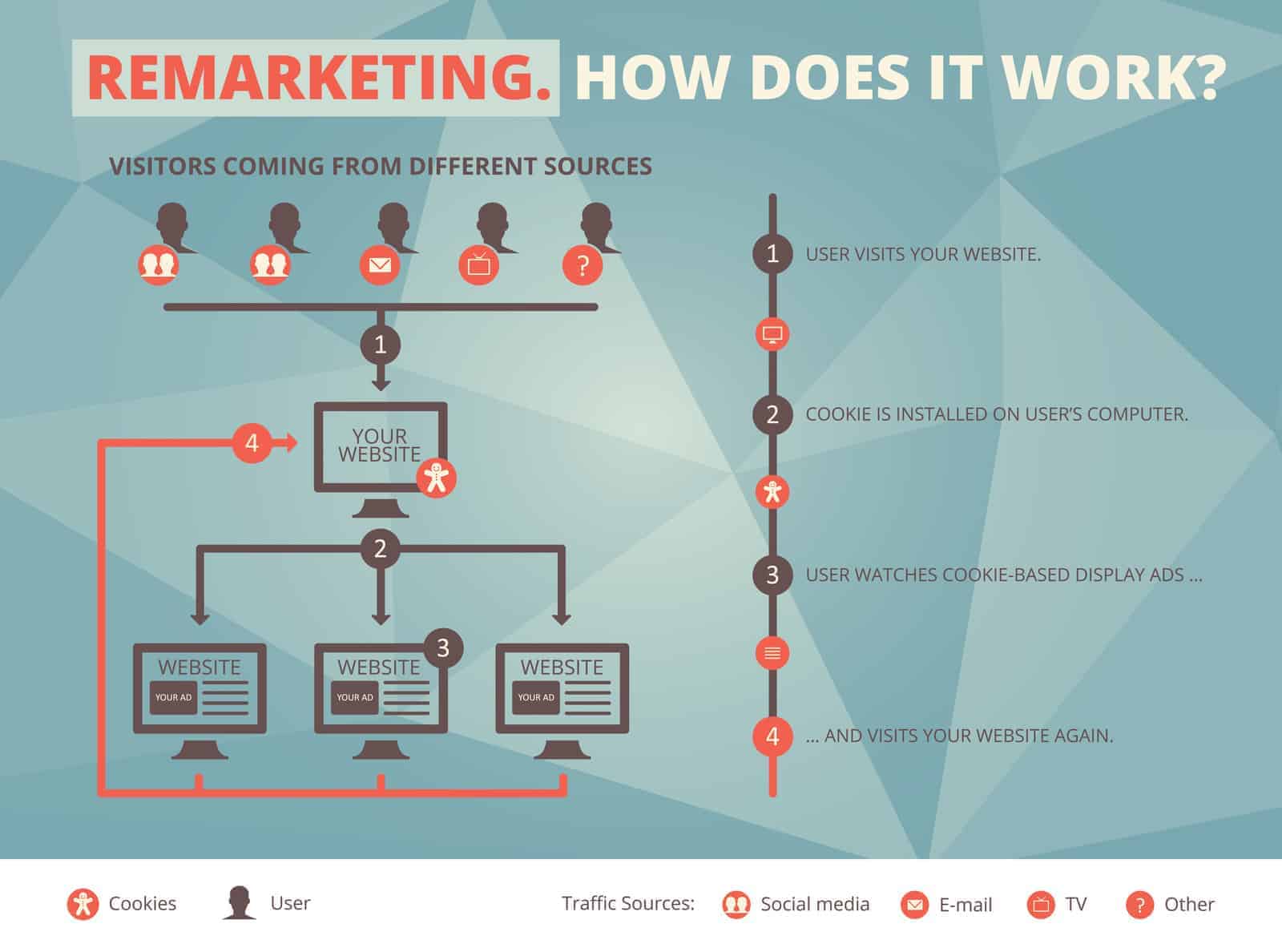It’s hardly news that our digital experience is getting more personalized every day. Open Netflix, and you see movies recommended specifically for you (my recommended list recently got it completely right with The Wedding Singer, and completely wrong with Columbo—but hey, I appreciate the effort). Sign up for a retailer’s email list and they notify you when items you’ve clicked on are on sale (I and my wallet know from experience how persuasive those emails can be—thanks, Modcloth).
But now the personalization is bigger than just on specific sites. You’ve probably noticed that if you search for something on Google, you’ll probably see ads for that thing—tan high-heeled shoes or The Incredibles DVD or a mid-century sofa—popping up on the sites you visit thereafter.
It’s not exactly Google reading your mind, although it kind of seems that way. It’s actually an ad strategy called remarketing (or retargeting, depending on who you ask).
It’s been around for several years, but it’s only in the past year or so that it seems to be literally everywhere—I mean, when was the last time you visited a website without seeing ads that seemed hand-picked for you, from plane tickets to China, to fitness apps, to crime novels, depending on how you spend your browsing time?
We at Zen Media Group love remarketing, and here’s why: The concept behind remarketing, which digital marketers will no doubt be familiar with, is that businesses can essentially follow consumers around the internet with targeted ads.
Say you you’re looking for digital picture frames. Through a Google search you land on Nixplay’s website, but you leave without buying anything. Based on customer lists that Nixplay has set up and a snippet of code that they’ve pasted into their page’s HTML, they can target your browser with ads when you visit other sites. It doesn’t matter whether you’re tooling around on PopSugar or reading the news at NYTimes.com.
Check out this infographic for an overview of how remarketing works:
Via Fotolia
There are several platforms you can use for remarketing—Google AdWords has a great one, unsurprisingly, but AdRoll, ReTargeter, and Facebook are two other good options (we’ll talk more about Facebook below).
There are all kinds of ways to use this ad strategy, but here are our 5 favorite tactics for using remarketing to increase ROI.
Remarketing for retailers – decrease shopping cart abandonment
This has been, and continues to be, one of the most popular and effective methods of using remarketing. So, using the earlier example, let’s say you’re browsing Nixplay’s website looking at digital picture frames. You throw one in your cart, but then you get distracted by a cat video your co-worker sent you, and you leave the site without making the purchase.
Because Nixplay is internet marketing-savvy, they’re running remarketing ads that target you, the shopping-cart-abandoner.
When you head to YouTube to watch that cat video, you’ll see a Nixplay ad. When you search for something on Google, Nixplay could show up on the sidebar. Now you’re thinking about photos again, so you click on to Shutterfly, and there’s Nixplay again.
By now, you’ve probably decided that you really do want that picture frame, so you visit the site to check out and complete your purchase.
Integrating Facebook into your remarketing
Facebook ads are an excellent way to reach a large audience, and Facebook is one of the top companies when it comes to personalizing user experience. So it’s not surprising that they’ve got a strong remarketing platform themselves.
With Facebook, like with AdWords, creating a remarketing strategy is fairly straightforward. You can create your lists based on various criteria—you can choose to remarket to everyone who’s visited your website, for example, or you can choose specific pages or actions. These groups are called Custom Audiences.
Then you can create your ad campaigns based on each Custom Audience. If they’re people who visited your email list sign-up page, but didn’t sign up, maybe you want an ad that teases a recent headline from one of your email newsletters and prompts viewers to sign up.
Then, when users who have visited your website or specific pages of your website visit Facebook, they’ll see your ad—and with all the time people today spend scrolling through News Feeds and clicking on profiles, you’ve got a very good chance that they’ll see your ad multiple times.
Using remarketing on your blog
Take your company blog: it’s broken into various categories, so you can create different remarketing lists and ads for users who read pages in specific categories. You could even create a campaign for people who visit a specific post.
Say you had a blog post about a webinar or event your company was hosting, with a link to an RSVP page. You could set up a remarketing ad for people who visit the post but don’t RSVP, for people who visit the page and stay for at least one minute, but don’t RSVP—there are lots of possibilities. You could even create one for people who RSVP “yes”—perhaps an ad that takes users to the Events or Resources section on your website.
Remarketing in real life
The Raven blog has a great post offering a ton of IRL remarketing strategies, but here are a couple that we really like.
Let’s say that in your office, you have one of those give-us-your-contact-info-to-win-a-free-lunch setups—the kind that used to consist of a fishbowl that you’d drop your business card into. But instead of that, you’ve got a little sign at reception asking users to visit a specific URL in order to be entered to win a free lunch.
Now you’ve got a list of people who came into your physical office that you can target online with remarketing. Granted, you don’t necessarily want to be targeting the UPS guy, a pizza delivery guy, or other random people who may be coming through your doors, so you can fix that by adding a question or two—“Why did you visit us today?”—to the sign-up page.
Remarketing for Google search
You’ve probably noticed that those ads that pop up when you search for something on Google are not always for exactly what you searched for—that would get pretty boring. Instead, they might be for things that are related to what you’ve searched for. That’s because the businesses whose ads you’re seeing are using remarketing for Google search.
Maybe you’re wanting to get a dog. You live in Dallas, so you’ve been visiting the Texas Alliance for Homeless Pets.
But then you decide you’re not sure if you want to rescue, so you start Googling “dog breeders in Texas.“
Using remarketing, the Texas Alliance for Homeless Pets could make sure that you saw one of their targeted ads with a message about why you should adopt rather than buy. Clicking on it could take you straight to their Adopt page, or to a specific blog post like “5 Reasons to Adopt—Don’t Shop.” Now they’ve got another chance to get those cute little puppy faces in front of you, increasing the probability that you’ll take one of those cute little puppies home.
These are really just the broad strokes of remarketing, as the remarketing tools out there today allow for so much customization, there’s no way to cover it all. Basically, if you can figure out a way to effectively build your remarketing lists, there are hardly any criteria you can’t cover.
Are you ready to talk about upping your remarketing efforts, or digital marketing efforts in general? We offer a wide array of marketing services, so contact us today! We’d love to chat.








